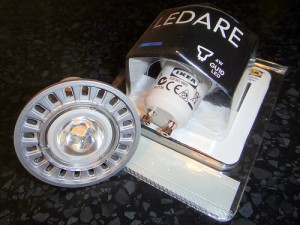Energy Consumption. Save with LED Bulbs
Are you tired of your high energy bills? There are simple solutions; just by replacing some of your older bulbs with LED bulbs can cut your overall annual energy costs. Upfront these bulbs are slightly higher in cost but over long-term periods it can save you money, while helping our environment by cutting down energy consumption. LED bulbs typically last longer than an incandescent and thus purchasing less has an upside. If using a bulb for approximately 3 hours per day, an incandescent will only last approximately 333 days out of the year, while an LED can last up to about 27 years. Pay careful attention to the actual light fixture. Most fixtures will have a label for the correct wattage to be used for each individual fixture. LED lights can screw into standard household light sockets. They are directly screwed in replacements for household lights. You unscrew your incandescent light bulb and screw in your LED light bulb. You do not need to redo your electrical system to use the LED lights. LED lights typically don’t work on dimmer switches. It would take too much heat to use a dimmer switch, thus the LED bulb will not operate properly. The dimmer switches waste so much energy that the LED bulb will glow or flicker when they are turned off, if the LED bulb is alone. There won’t be a flicker if you have LED lights in a series though. Dimmer switches leak because of the TRIAC which is why so much energy is wasted.
Some terms that may be helpful to know when purchasing light bulbs are:
TRIAC: An electronic component that can conduct current in either direction when it is turned on
LED Lamp (or bulb): Solid state lamp that uses light-emitting diodes as a source of light.

Photo by Matt Kieffer
Halogen Lamp (or bulb): A halogen lamp, also known as a tungsten halogen lamp or quartz iodine lamp, is an incandescent lamp that has a small amount of a halogen such as iodine or bromine added.
Watt: Derived unit of power. It is defined as one joule per second, and measures the rate of energy conversion
PAR (Parabolic Aluminized Reflector) __(Insert #): Is referring to the diameter of the lamp bell. While looking at the examples below PAR30 is approximately 3.75 in inches while PAR20 is 2.5 inches
Here are some tips in swapping out old bulbs for new….
Kitchen & Living Room:
Par30 Halogen Bulbs 75 Watt—> Philips EnduraLED Par30 Bulbs 12 Watt
Hallway:
Par20 Halogen Bulbs 60 Watt—> Philips EnduraLED Par20 Bulbs 7 Watt
Bedroom & Bathroom:
Incandescent Bulbs 60 Watt—>Philips AmbientLED Bulbs 12.5 Watt
